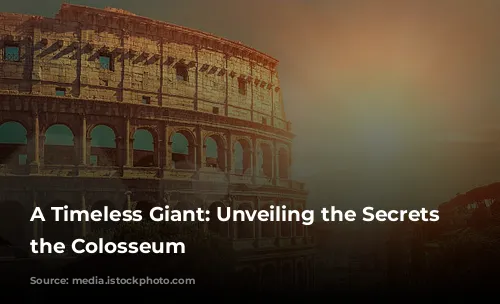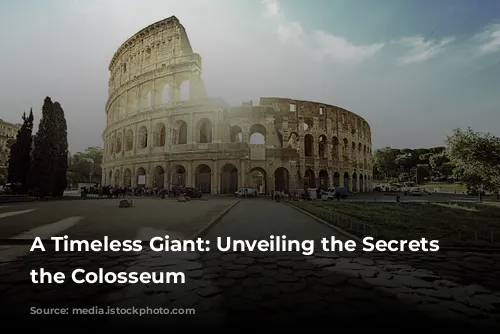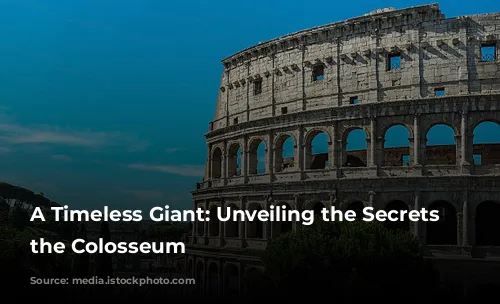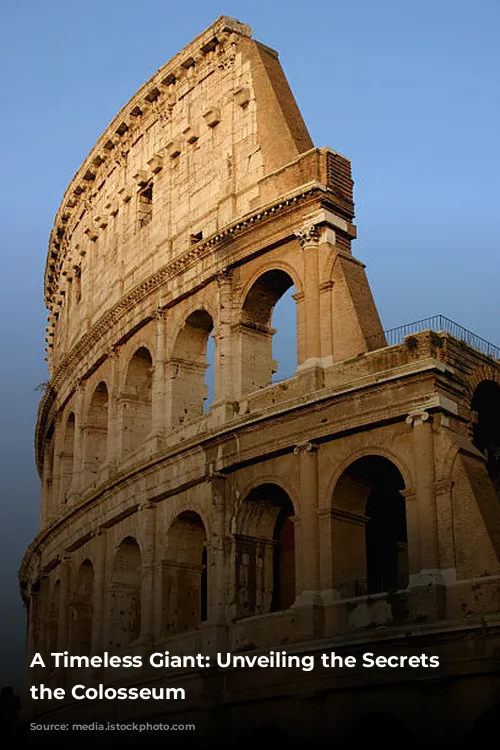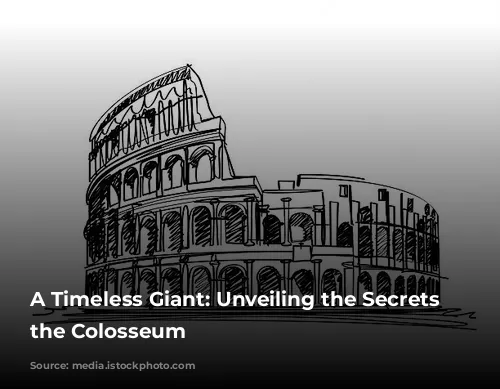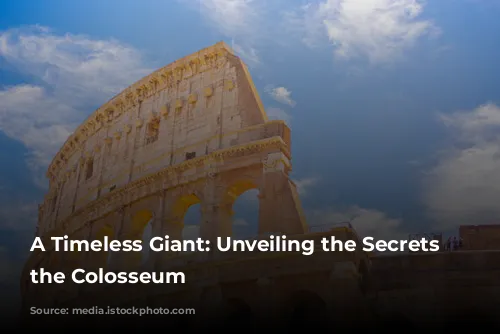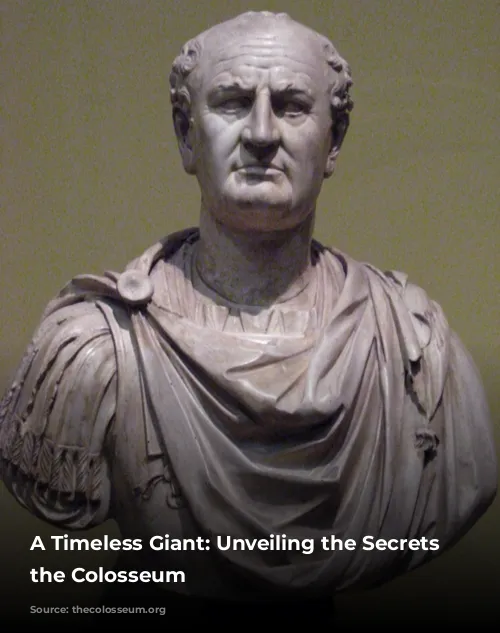Step back in time and imagine the Colosseum, a colossal amphitheater that once resonated with the roar of the crowd, the clash of swords, and the thunderous bellows of wild beasts. With nearly two thousand years of history etched into its walls, the Colosseum stands as a silent testament to the power and spectacle of ancient Rome. Let’s delve into the fascinating facts that make this iconic landmark a true marvel of human history.

The Colosseum’s Genesis: From Construction to Purpose
When was the Colosseum built? The construction of this architectural wonder began in 72 AD under Emperor Vespasian and was completed in 80 AD. It was a monumental project, fueled by the toil of countless individuals. How many people participated in its construction? Following the Roman conquest of Judea, an estimated 60,000 to 100,000 Jewish slaves were brought to Rome and forced to labor on this colossal structure. These skilled workers, overseen by Roman engineers and craftsmen, poured their sweat and tears into its creation.
But what was the Colosseum’s purpose? Emperor Vespasian, seeking to appease the Roman people, had Nero’s ostentatious palace torn down and ordered the construction of the Colosseum in its place. This grand amphitheater was intended to serve as a stage for public entertainment, a place where all Romans could gather and experience the thrill of gladiatorial combat, wild animal hunts, and other spectacles.
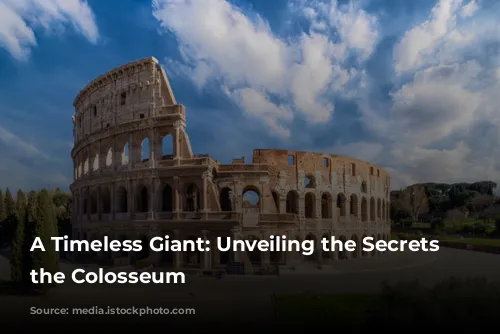
Unraveling the Colosseum’s Dimensions and Design
What does the Colosseum’s name mean? Originally known as the Flavian Amphitheater, its name likely derived from the colossal bronze statue of Emperor Nero that once stood nearby. The statue itself was modeled after the Colossus of Rhodes, inspiring the name “Colosseum,” which signifies the structure’s immense size.
How big is the Colosseum? This architectural marvel is an oval-shaped structure, measuring 189 meters in length, 156 meters in width, and 48.5 meters in height. Covering an area of six acres, the Colosseum truly deserves its name!
How many arches do the Colosseum have? The Colosseum’s outer walls are adorned with three levels of Doric, Ionic, and Corinthian columns, each level boasting 80 arches. These arches, originally numbered with Roman numerals, served as guiding markers for spectators to locate their seats. Though time has taken its toll, 31 of the original 80 arches still stand proudly, offering visitors a glimpse into the Colosseum’s past grandeur.
What material was the Colosseum built from? The Colosseum was constructed using an estimated 100,000 cubic meters of travertine stone, quarried from Tivoli, a location 20 miles away. This durable stone, held together by thousands of iron clamps, ensured the structure’s longevity and resilience against the ravages of time.
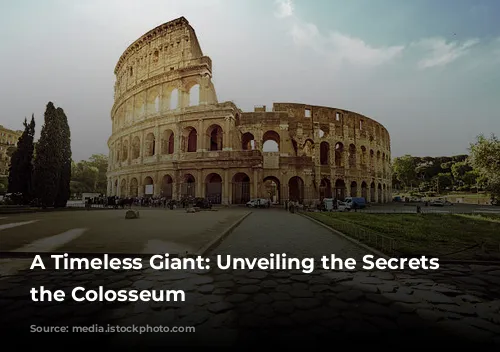
Beneath the Surface: Uncovering the Colosseum’s Hidden Secrets
What is underneath the Colosseum? Hidden beneath the arena’s surface lies a network of tunnels and chambers known as the Hypogeum, a labyrinth of secrets. This underground complex served as a holding area for gladiators, animals, and prisoners, awaiting their fate in the arena. Eighty vertical shafts provided access from the Hypogeum to the arena, while an intricate network of trap doors allowed for the deployment of scenery and props during various spectacles.
How many spectators could the Colosseum seat? The Colosseum had a seating capacity of 50,000 to 80,000 spectators, showcasing the vast scale of these events and the collective passion of the Roman people for public spectacle.
How many people died in the Colosseum? While it’s impossible to determine the exact number, it’s estimated that over 400,000 gladiators, slaves, convicts, prisoners, and other entertainers met their demise within the Colosseum’s walls over the 350 years of its use for human bloodsports and spectacles. This stark statistic highlights the brutality and tragedy inherent in these events.
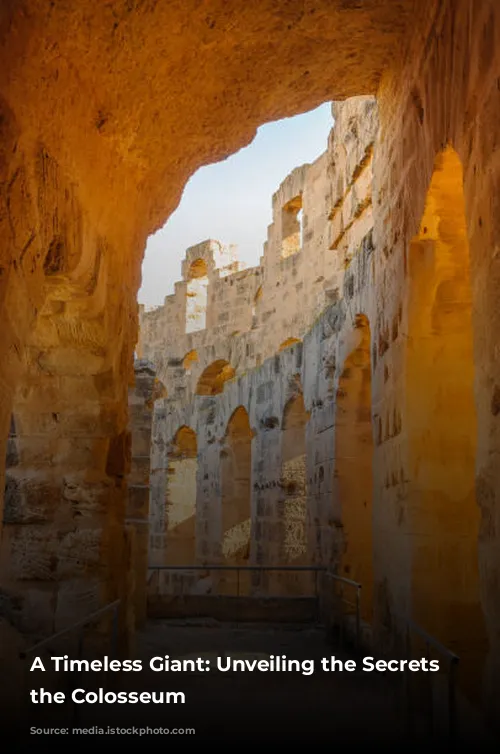
The Colosseum’s Fierce Inhabitants: Animals and Gladiators
What animals were used in the Colosseum? A diverse array of animals, some used in staged hunts and others as executioners, graced the Colosseum’s arena. Lions, tigers, wolves, bears, leopards, wild boar, elephants, hyenas, buffalo, hippopotamus, crocodiles, and even giraffes were all part of these spectacles, adding an element of danger and exoticism to the events.
How many animals were killed in the Colosseum? While the exact number remains a mystery, it’s estimated that millions of animals were killed in the Colosseum over the years. This tragic statistic underscores the scale of these spectacles and the toll they took on the animal kingdom.
What types of spectacles were put on in the Colosseum? The most renowned events held in the Colosseum were gladiatorial battles. However, a variety of other spectacles entertained the crowds, including hunts, executions, and even staged naval battles, known as Naumachiae, where the arena was temporarily flooded.
Were gladiator fights as bloody as is believed? While the popular image of gladiatorial combat often conjures up scenes of brutal, unmitigated violence, the reality was somewhat different. Gladiator fights were regulated and monitored, with fighters categorized based on their size, fighting style, and experience. Referees and doctors oversaw the bouts, ensuring fair play and medical attention when needed. While death was a possibility, many gladiators enjoyed long careers, proving that the fights were not always a free-for-all.
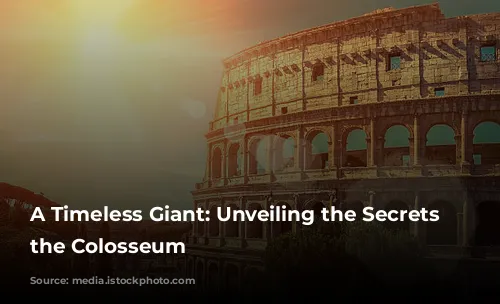
The Colosseum’s Legacy: A History of Transformation
Were Christians martyred in the Colosseum? While it’s true that thousands perished within the Colosseum’s walls, there’s no concrete historical evidence to support the connection between Christian martyrs and the Colosseum.
Did the events depicted in the movie Gladiator really take place? The movie “Gladiator” draws inspiration from historical figures and events. While Commodus, the Roman Emperor, was a fan of gladiatorial combat and often participated in the arena, he typically fought against handicapped or non-predatory animals, showcasing his sadistic nature rather than bravery. The movie’s depiction of his death is a fictionalized account.
Not officially, but in practice they might as well have been. They were member of the infame class, and upon becoming gladiators (whether by choice or as punishment for a crime) they were stripped of all their rights and became property of their owners, their lives forfeit.
When was the Colosseum last used to host fights? The last recorded gladiator battles took place in 435 AD. While gladiator fights ended, hunts continued for another century.
Why did gladiator fights in the Colosseum stop? Contrary to popular belief, the decline of the Roman Empire and the increasing cost of maintaining the Colosseum, rather than the rise of Christianity, led to the cessation of gladiatorial combat. The Empire simply could no longer afford the resources required to sustain these spectacles.
What catastrophes has the Colosseum suffered? Throughout its long history, the Colosseum has endured multiple fires and earthquakes, leading to significant damage and requiring numerous repairs and reconstructions. These events underscore the resilience of the Colosseum, which has withstood the test of time and continues to stand as a testament to its enduring power.
What has the Colosseum been used for other than as an arena? Beyond its original purpose, the Colosseum has served as a cemetery, a place of worship, housing, workshops for artisans and merchants, the home of a religious order, a fortified castle, and most recently, a beloved tourist attraction.
How many people visit the Colosseum every year? The Colosseum attracts over 7 million visitors annually, making it one of the most visited landmarks in the world. This popularity is a testament to the enduring fascination with this magnificent monument to Roman history and spectacle.
The Colosseum, a timeless giant, continues to captivate and inspire. Its stories whisper from the stones, reminding us of the grandeur and brutality of the Roman Empire. As you stand before this architectural marvel, let your imagination transport you back to a time when the echoes of gladiatorial combat and the roars of the crowd filled the air. The Colosseum’s legacy lives on, a beacon of history that continues to inspire awe and wonder.

